Whirlpool dishwasher error codes
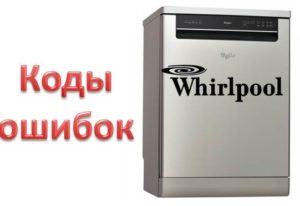 When we talk about Whirlpool dishwasher codes, we mean errors that are recognized by the appliance’s self-diagnosis system. They are assigned a specific code. Why are they so important? Such codes tell the user what exactly is broken in the machine. If the code is deciphered correctly, you can independently get to the bottom of the causes of the problems and fix them without resorting to the help of a specialist. Today we will deal with deciphering the main codes of the self-diagnosis system of Whirlpool dishwashers.
When we talk about Whirlpool dishwasher codes, we mean errors that are recognized by the appliance’s self-diagnosis system. They are assigned a specific code. Why are they so important? Such codes tell the user what exactly is broken in the machine. If the code is deciphered correctly, you can independently get to the bottom of the causes of the problems and fix them without resorting to the help of a specialist. Today we will deal with deciphering the main codes of the self-diagnosis system of Whirlpool dishwashers.
Features of fault diagnosis
The main feature of the self-diagnosis system of the Whirlpool dishwasher is that not a single code has an unambiguous interpretation. In other words, the error code cannot specifically indicate a particular malfunction; it only determines the range of possible breakdowns that the user should pay attention to and check first. Let's give a specific example. Error E5 indicates that:
- no water flows into the dishwasher;
- there is too little pressure in the system;
- a clog has formed in the dishwasher, which prevents water from circulating normally;
- the intake valve is broken.
As you can see, the range of faults indicated by this code is quite wide and you still need to spend time to find a specific breakdown and then fix it. One more nuance. Any of the errors that we will talk about later can be caused by a breakdown of the control module or a simple short-term firmware failure.
It turns out that we can add this to the standard decoding of error E5.And if we check the flow of water into the machine, then the inlet valve, then the filters and hoses for blockages and it turns out that everything is in order, then we will need to tinker with the control module.
Experts advise that if any system error occurs, first reboot the dishwasher a couple of times with it completely de-energized in order to eliminate a short-term system failure, and only then poke around to find the problem.
Whatever one may say, not everything is so simple with these codes of the Whirlpool dishwasher self-diagnosis system. Even if you have a detailed decoding of each code in your hands, there is no guarantee that this code will 100% cause a malfunction specifically in your case. However, the probability is very high, so decryption data should always be at hand.
Errors E
When describing the self-diagnosis system codes, we will adhere to the following algorithm: first we will indicate the fault code, then a brief explanation of it and the reasons for its occurrence, and lastly, we will briefly recommend how to eliminate these reasons with your own hands. This description will be made for each error. Let's get started.
Code E1. This means that the system protecting the housing from leakage has generated an alarm. In this case, you need to carefully check the bottom of the washing chamber, the salt tank and the pipes for leaks. You need to look at where water is dripping or already pouring into the pan. You should also inspect the dishwasher hoses for damage and replace them if necessary.
Code E2. This error indicates a violation of the electrical safety system. Probably, somewhere the wiring is exposed and current is leaking to the housing. If you additionally feel a tingling sensation when you place your hand on the metal part of the dishwasher, this once again confirms that there is a leak and this is very dangerous.You need to immediately turn off the dishwasher, and then disassemble it and check all the wiring and contacts.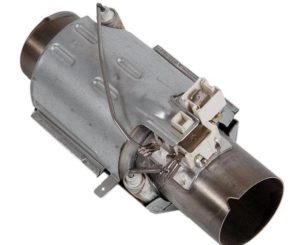
Code E3. And this is an indication of problems with the heating element. Perhaps the heating element or thermostat has failed, the power supply has broken, or the bus on the control board has burned out. You will have to check everything listed step by step using a multimeter. It’s better not to go into the control module yourself, as this could make the problem worse.
Code E4. There were problems with the thermostat, either the element itself burned out, or its supply wiring was broken. You need to check the thermostat using a multimeter, and if the part is working, you need to carefully check the wires going to it. If both are working properly, then the problem is in the control module.
Code E5. This means that it takes too long to fill the dishwasher, much longer than the program allows. What could have happened? Perhaps they simply forgot to open the valve of the tee tap. Maybe the water utility has turned off the water supply or the inlet hose is simply clogged. Most often, it is not even the hose itself that gets clogged, but the small flow filter, which is located at the junction of the hose with the dishwasher body. In the worst case, the intake valve has failed or its power supply has been interrupted. We check everything from the water supply and blockages to the inlet valve. The valve itself will probably need to be replaced.
Code E6. For some reason the machine cannot drain waste water. We check three main reasons:
- clogged drain hose or garbage filter;
- pump malfunction;
- circulation pump failure.
In most cases, the cause of the error is blockages; if cleaning the filter and hose does not help, you need to look at the pump.Apparently its impeller does not rotate due to dirt that has accumulated in it or the pump itself has failed. All this needs to be checked, preferably using a multimeter. For qualified inspection and repair of the circulation pump, you will need the help of a specialist.
Errors F
Code F0. This error does not appear on its own. The dishwasher displays it only if the user runs the test program. It means that one of the sensors is malfunctioning. The problem is solved by checking the sensors step by step, identifying the faulty one and replacing it.
Code F1. Most likely indicates a breakdown of the temperature sensor. If this sensor transmits incorrect readings to the control module, the temperature inside the dishwasher begins to fluctuate. The system decides to stop working and issue an error. The problem is solved by checking and replacing the temperature sensor.
Code F2. This means that the mechanical float sensor, which is located in the tray of the Whirlpool dishwasher, has triggered. It could be a simple sticking of the contacts or it could actually be a leak. What to do? Well, first of all, you need to remove the side wall of the dishwasher and carefully inspect its tray using a flashlight. If the pan is dry, you can move the sensor with a screwdriver so that the contacts open and continue to operate the equipment.
Code F3. Indicates a heating element, thermistor or control module bus. All these parts are checked and, if necessary, replaced with new ones.
It is better to entrust the replacement of the control module bus to a specialist.
Code F4. If such an error “pops up”, you need to check how quickly the machine drains the water. Restart the dishwasher, set the program and listen to how quickly the machine draws and drains water. If there is no drain at all, you need to look at the pump, drain hose (possibly a siphon under the sink), as well as the tire or firmware of the electronic module. The latter is the least likely, so let's focus on the drain pump and hose. Often clogs are to blame, but sometimes the pump also has to be replaced.
Code F5. Indicates to us that there is a problem with the sprinkler. In the vast majority of cases, this unpleasant error appears when the sprinkler nozzles are clogged. It is enough to clean them with a thin sharp object, such as a gypsy needle, and the error will disappear. In another case, this code appears when the engine stops working. In this case, it needs to be diagnosed and replaced.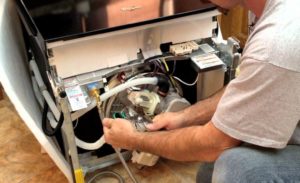
Code F6. When this error appears, we must check the machine for the presence of water. Let's start by cleaning the flow filter mesh on the inlet hose. If this does not help, then you need to inspect the flow sensor and, if necessary, change it.
Code F7. If code F7 appears, then you need to carefully examine the intake valve. If the valve works correctly (opens and closes completely), we proceed to examining the pressure switch. First, let's blow out its tube, and then test the part with a multimeter. We do not repair a broken part, we only replace it.
Code F8. Indicates to us that there is insufficient water in the dishwasher system. The problem may be caused by clogged filters in front of the intake valve or a poorly functioning impeller. In very rare cases, the intake valve may be at fault. Very often, this error occurs if a low-quality dishwashing detergent that foams heavily was poured into the dishwasher. The problem is eliminated by cleaning the filter, cleaning or replacing the impeller, and adjusting the inlet valve. If the product is to blame, then you don’t need to use it in the future.
Code F9. It appears when the machine begins to fill and then drain water without interruption. In most cases, this indicates a damaged inlet valve where it no longer holds water. In more rare cases, such a symptom is a consequence of burnout of the track or triac of the control board. In such a situation, the control module issues a command to draw water, but does not stop this process. The solution to the problem is to replace the intake valve or repair the control module.
F.A. The culprit of the error is Optical Water Indicator or simply an indicator that monitors the purity of incoming water. This part may burn out, its lens may become dirty, or it may not be the problem at all, but a burnt-out bus of the control module. Such dishwasher malfunctions can be resolved as follows:
- the lens is pulled out and cleaned;
- the indicator itself is checked with a multimeter; if it burns out, it is replaced;
- if the problem is a burnt out tire, you need to give the control board to a repairman for repairs.
F.C. This error appears if your Whirlpool dishwasher model is equipped with a sensor that detects water hardness and this sensor has failed. The solution to the problem is to test the sensor and replace it.
So, we have looked into the various fault codes for Whirlpool dishwashers. Now all you have to do is find the code of interest in our list and read its decoding. If you are still interested error codes for different dishwashers, read the publication of the same name on our website. And we say goodbye to you and wish you good luck!
Interesting:
10 reader comments


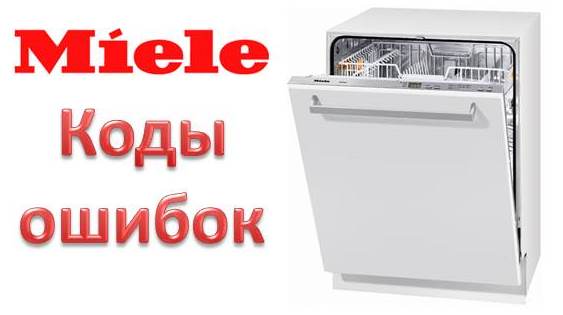

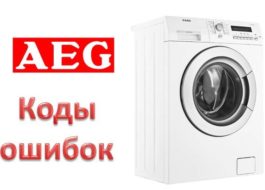
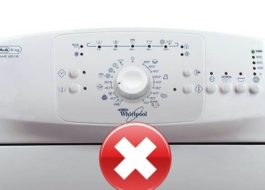
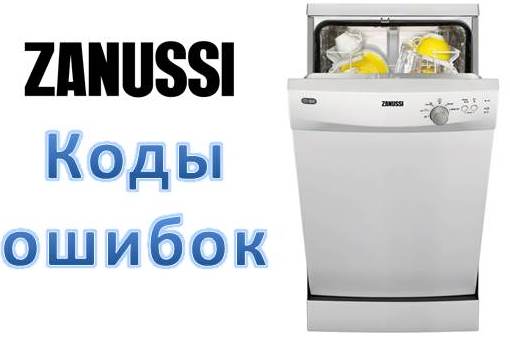














Why, when deciphering errors, do you not even mention their combinations? For example: F6 and E4? Or F4 and E3? After all, in these cases they cannot be considered as two independent errors?
F4, E3 - either the relay in the block is malfunctioning, or the bushings on the compass are worn out and are loose.
Error F10?
When you enter wash program 2, the button on the top jumps to rinse, flashes rapidly and beeps. Tell me, what is the reason?
What does error F 15 mean?
What does error F12 mean?
Whirlpool. What does the letter H stand for?
When the program starts, after a few minutes it starts flashing and produces short beeps and this letter appears.
What does F15 mean?
Whirlpool starts with rinsing. Then the tablet does not open and the machine turns off after working for 5 minutes.
What does error F15 mean and the light is blinking?